Oliver Roick's Weblog
— The story of Deltron 3030, a defining underground hip hop record, told by Deltron members Del tha Funky Homosapian, Dan the Automator and Kid Koala.
KID KOALA I remember when it first came out, it wasn’t like people just got it right away or anything.
DAN THE AUTOMATOR That’s just how it is, because you’re giving them something that they’re not used to. You’re in the music world, and you know everything has to be categorized. And once you do something that’s not categorized, it messes people up, it trips them up.
KID KOALA We finished that record, we did a ten city tour, I think, but we were all literally coming off of other tours, so we just stopped it at that. A few months later, Gorillaz came out and just super-nova-ed.
DEL THA FUNKEE HOMOSAPIEN When it first came out, wasn’t nobody tripping like that. Of course, I knew that ahead of time. Nobody’s going know when it first drops. You got to give it time for people to listen to it and figure out what it is. It was some years.
KID KOALA It took three, four years before it found its audience and then that audience just kept multiplying somehow. The record was being passed around to people. I guess it became a little bit of a cult classic in a sense. It was odd how excited people got when I would even mention Deltron, or that we were working on some new material.
The first time I heard about Deltron 3030 was on VIVA2, a more cultured, German-speaking MTV, and it didn’t stick. I rediscovered it years later and realised what I had missed. A truly groundbreaking hip hop record.It became a favourite amongst some of my friends, even those that wouldn’t normally listen to rap music much.
Reading the Web like a newspaper
— Use an RSS reader to escape the noise of the Web and experience it more like reading a newspaper, says Molly White.
While the general notion resonates, there is still a major difference between an RSS reader and a newspaper. A paper has a beginning and an end. You get one in the morning and that’s what is being published that day. Once you’ve read everything, you’re done for the day. A newspaper doesn’t update during the day. You can’t add anything during the day either.
Phil Gyford’s Guardian uses the Guardian API to generate a digital version of the Guardian’s print issue. It’s generated once a day. No pieces are added or removed until the following day. It’s enough to stay up to date, but slow enough so you’re don’t get buried under a constant barrage of news. I want a RSS reader that works the same way, one that updates only once a day that presents the yesterday’s posts in a clean and easy to navigate way.
— Robin Sloan: Spending time with the material
A wild find at a comic book store yesterday: The Making of Original Dungeons & Dragons, a doorstop volume, devoted mostly to complete reproductions of early versions of the game, from typewritten drafts to published booklets. This isn’t just a breezy review, but a presentation of real archival material. I pored over the book for hours, enjoying the edits in pencil, the 1970s paste-up design. I read out of order, flipped back and forth, skimmed and scanned, jotted notes on my phone.
It occurred to me, deep into a really wonderful experience, of reading and thinking and wondering and feeling, that if Wizards of the Coast had published exactly the same material online — and you can imagine this easily: you can imagine the website, as slick as one of the Google Arts & Culture sites, or the digital book from the Steve Jobs Archive — I would have clicked over; said, “wow, cool”; then moved on to the next thing.
[…]
[W]e can see plainly the value of the book as information technology: a mechanism for accessing a bundle of material, for spending time with it, for investigating and considering it. Still unmatched!
There are books I like to own as a physical, printed copy. And there are books where I don’t bother, books that I prefer to read on my trusty eleven-year-old old Kindle.
Like Sloan’s copy of “The Making of Original Dungeons & Dragons”, the books I buy in a shop are those that are highly visual, containing many photographs, maps, and graphics. The books you come back to, in an idle moment, to flip through its pages, go back and forth in a non-linear way. Whereas a novel? That I get digital. It’s likely I’ll only read it once and never touch it again.
The Red Circle
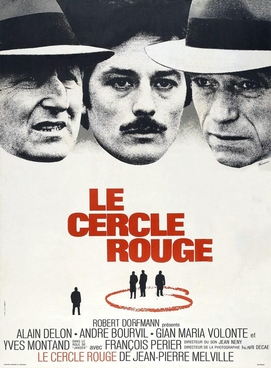
— The weather is miserable, it’s the middle of winder, it’s cold and wet. The light is bleak, although the movie is shot in colour, it feels like a black and white movie. There’s snow. These are the conditions where just want to get on with things and go back home. And so does this movie. It gets on with it, no fluff. The story unfolds quickly and straightforwardly, there are no distracting love interest, and very little dialog. Every word spoken is important. Not banter. No one speaks during the heist. This is my kind of heist movie. Who needs Ocean’s 11 to thirty-nine, if you’ve got Melville’s Red Circle?
(1970) Director/Screenplay: Jean-Pierre Melville. Cast: Alain Delon, Andre Bourvil, Yves Montand, Gian Maria Volonté.
Latest Books Reviews
— Work culture has changed dramatically in the last hundred years. Before it was obvious that you’re working for “the man.” In today’s hustle culture, you work for yourself, first and foremost. Your employer’s success is your success. You don’t progress? You’re not seeing the opportunities. Still on a shit salary? You’re not working hard enough. Mandy Brown writes:
The turn, here, is to note that what’s burned up is both the individual worker and the collective they might have belonged to. That is, when the worker absorbs the management ethos and becomes their own manager—when they see themselves as a project to be designed, branded, and marketed—they lose all sense of solidarity with other workers. Other workers become competitors instead of comrades. And everyone loses.
I noticed this in previous jobs. People, who primarily define their role as “entrepreneur of the self” and shoehorn their actions under the disguise of “the mission,” start working against other people or teams. They prioritise outcomes that prove advantageous to themselves. And management doesn’t figure it out because they play the same game. And we end up with two groups. One that gets ahead, and another that ships actual work but slowly burns out.
— Lessons from Robert Redford’s impeccable fashion sense. (Side note: I wish Derek Guy would put this kind of content on his blog instead of Bluesky, which I have blocked on my devices along with other social media platforms to stay sane. And the way the thread is presented here, interrupted by irrelevant comments by his followers, just doesn’t make for a good reading experience.
Good Internet is a volunteer-run, not-for-profit print and digital biannual magazine for personal website owners and those interested in using the internet as a means of self-expression, art, and recreation.
The Thomas Crown Affair
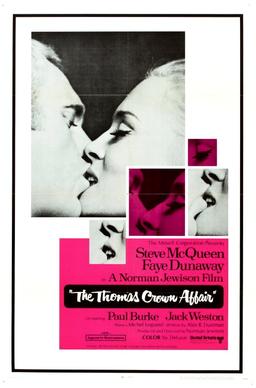
— Those were the days; when bored rich men would develop elaborate ploys to rob a bank, and then fall in love the with insurance investigator hired by the bank to recoup the money. A lot less damage done than today’s Thomas Crown, who would probably force his way into politics hoping to replace government with an AI.
(1968) Director: Norman Jewison. Screenplay: Alan Trustman. Cast: Steve McQueen, Faye Dunaway, Paul Burke, Jack Weston.
Bullit
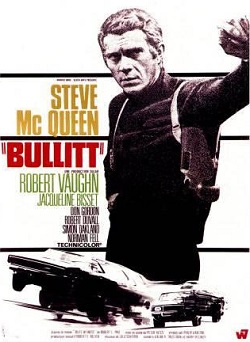
— I don’t have much to say about Bullitt. Not because this was a bad movie. I spent 113 minutes being bedazzled by Steve McQueen’s impeccable style, which is why I need to keep this short. I’m out shopping for a turtleneck jumper and a brown blazer.
(1968) Director: Peter Yates. Screenplay: Alan R. Trustman, Harry Kleiner. Cast: Steve McQueen, Robert Vaughn, Jacqueline Bisset.
— Another photography post: Stephen Shore’s Early Work includes photography documenting everyday life in the 1960s New York :
Early Work collects for the first time the entirely unseen photographs created during Shore’s early teenage years between 1960 and 1965, a period of rich experimentation that precedes his time working with Andy Warhol at The Factory.
— The Guardian has a nice overview of documentary photographer Martin Parr’s career, in pictures and in Parr’s own words.
— If you needed a reminder how utterly weird Mark Zuckerberg is:
A seven-foot statue depicting Ms. Chan in a silver, flowing robe that Mr. Zuckerberg commissioned last year sits on the property.
There was once a rumour that Jeff Bezos had a fully equipped Starbucks installed at his home. It turned out to be false, but is nevertheless entirely believable because the one thing all Bezos, Zuckerberg, Musk and many other tech billionaires share is a lack of class. Ironically one of the few things money cannot buy.
— Elron is at it again (not linking because it’s obviously posted to X and I don’t link to X)
In principle, given that software companies like Microsoft do not themselves manufacture any physical hardware, it should be possible to simulate them entirely with AI.
In a recent South Park episode, Randy March, high on ketamine, runs whatever remains of his weed farm fully into the ground after solely relying on ChatGPT for every business decision. This feels like the same plot.
Recently at the Movies and on TV
— Alan Schaller is not only one of the finest contemporary black and white photographers, he also has one of the best photography channels on YouTube He never discusses gear or ponders the meaning of it all without ever getting to the point. Instead you get actual practical insight on photography techniques, presented with wit and humour.
How to photograph silhouettes
How to use panning to add motion to your pictures:
Reflecting on reflections:
The last one has the most London ending ever. Set out to do a thing, go to the pub “for one,” end up getting pissed without doing the thing.
— Sad to see Son Heung-min leave Tottenham this summer. He’s an incredible footballer, his Puskas Award winning goal against Burnley proves it.
— The Set Design of Sesame Street. A look at how Jane Jacobs, ideas from “The Death and Life of Great American Cities” were incorporated into Sesame Street’s set design in the 1960s and how the set change since (cleaner, brighter, gentrified).
— The Mozilla developer Network turns 20. MDN still is my go to page whenever I need documentation on JavaScript features or browser APIs. So essential that I’d search “JS array reduce MDN” to make sure MDN is the top result.
— “I Drank Every Cocktail”, well, not every cocktail but all cocktails listed by the International Bartenders Association.
About the list, the IBA writes:
The official IBA Cocktail List recognizes the most requested recipes, used over the years by bartenders servicing the most important bars all over the world.
One drink, the Spicy Fifty, proved to be a real headache for Aaronson to complete his quest. A drink so obscure that he had to fly to London to go to a specific bar.
I was able to check off the Spicy Fifty, one of the list’s most perplexing inclusions, by going to creator Salvatore Calabrese’s own Velvet bar at the Corinthia hotel, seemingly the only place in the world where it’s served.
Does the IBA list recognise “the most requested recipes” if you have to fly half way around the world to have a drink in one particular bar? Just a thought, really, I don’t care.
After reading the story, I went out to buy Campari and Vermouth because I felt like a Negroni. A “pedestrian” choice it may be, but I’m a simple man. I like my drink like I like my tech. A bit boring, perhaps, but well-established and has stood the test of time.
— Can Directories Rise Again?. I sure hope so, but I don’t think many people will put in the work to dig through directories as long as they can access no-effort curated content 24/7.
The only resistance to the current advance of AI is humanity. We are relearning that humans can see through the bullshit. There are examples everywhere.
This is why I love blogs with many links as they are chronologically ordered lists of links curated by humans. I trust humans more when they are posting for the sake of collecting content, instead of posting for reach, and likes and comments and going viral. Because such people don’t see through the bullshit, they contribute to it.
— The hardest working font in Manhattan. Gorton, the font doing the work, is so ubiquitous, once you’ve read this piece you’ll see it everywhere.
— Classic Web posts “screenshots of classic websites and blogs from Dot-Com, Web 2.0 and the 2010s.” Spelunking in the Wayback Machine, indulging in old-fashioned web design is one of my favourite past times. So this is right up my alley.
— ChatGPT running hot tonight as scores of Gooners scramble to come up with new jokes.
Guilty Bystander
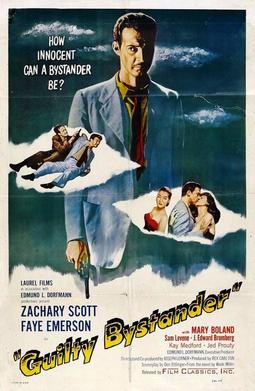
— This has all the ingredients for a good old-fashioned film noir. A struggling main character, the good guy chasing the bad guy through a series of tunnels, the light always throwing oversized shadows on the walls, and a twist at the film’s end.
When I learned that large parts of Guilty Bystander were shot on location, I hoped for some nice shots of 1950s New York. But I realised when you tell a story in 90 minutes, there’s little room for filler. No time for extensive drone shots with dramatic music or long-winded pan shots. Today’s movies are full of these, that’s why it’s hard to find a contemporary movie that’s shorter than two hours.
(1950) Director: Joseph Lerner. Screenplay: Don Ettlinger. Cast: Zachary Scott, Faye Emerson.
— I did not know there was a 30-minute extended film to Beastie Boys’ Make Some Noise.
— The Neocities browse page features some absolutely wild web design and I’m here for it. Children, this is what the social web looked like before social media.

A Programming Note
— Blogging has been slow here in the recent weeks. Turns out a baby really does need a lot of attention. And so, in the foreseeable future, there will be little action on this site. I’m planning to log what movies I watch and the books I read but there will be less internet and culture links and commentary.
All The President’s Men

— Imagine this for second, considering our day and age: Two journalists with a spine and real conviction, unravel scandal in a government’s highest office, and follow the story for weeks until it is completely and truthfully told and the responsible people are held accountable. All this with their editor’s support, who do not think to that the other side needs to be heard or succumb to the pressure of the twenty-four hour news cycle.
Imagine that. Functioning journalism.
(1976) Director: Alan J. Pakula. Screenplay: William Goldman. Cast: Robert Redford, Dustin Hoffman, Jack Warden, Martin Balsam, Hal Holbrook, Jason Robards.
The Gutenberg Parenthesis
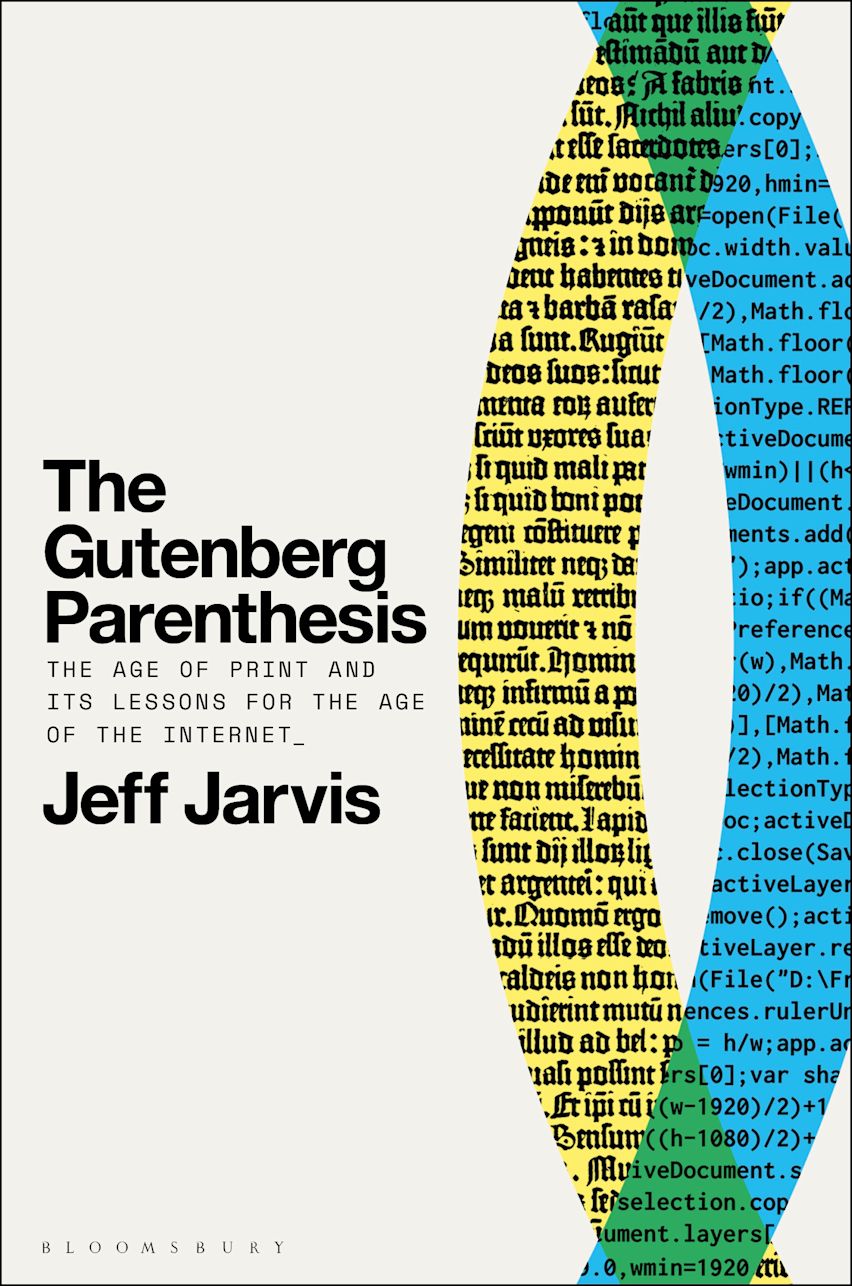
— Journalist scholar Jeff Jarvis walks through the history of printing at breakneck speed, its technological foundation, and its impact on society as books, newsletters, and newspapers circulated across the globe. The reactions to this new technology and forms of publication were a litany of all too familiar complaints we’ve been hearing since the Web became popularised: The spread of lies, controversy-bread celebrities, the flood of mundane content.
We find ourselves at the beginning of a new digital parenthesis in which we move from a world where communication is dominated by print to one where communication is primarily digitally mediated. We are in the first stages of this development and therefore unable to understand what a new digitally dominated world will eventually look like once the dust settles. In print, truth and sanity mostly prevailed, eventually leading to the Enlightenment, modern scientific discovery, and democratic movements. And so, Jarvis’ argument goes, we should let the Web evolve, assuming the worthwhile ideas will win eventually despite all reactionary push-back.
But there is a difference between the early days of print and the early days of the web in which we currently find ourselves. In the early days of print, there were a large number of publishing houses in every country and many cities. The resulting diversity provided a shield from censorship of the church and ruling aristocrats so the better, more truthful ideas spread and prevailed.
On the Web, we have three to five websites, which account for the majority of global web traffic. And the leaders of the businesses behind these websites are susceptible to reactionary ideas and are pro-actively cosying up to autocratic regimes. It’s as if in the early days of print there were only five publishing houses, all of them from Germany, all of them led by associates of the king or the local bishop. How do we think the reformation would have played out in that scenario?
(2023) Bloomsbury Academic, 328 pages, ISBN: 9781501394829.
— Interview with Shaina Anand and Ashok Sukumaran, founders of Bombay artist group CAMP, about their current show at MOMA. I saw their work Bombay Tilts Down last year at RMIT in Melbourne and I can highly recommend. Go see the show if you’re New York in the next couple of months.
— Worth following: A pull request proposing to reinstate Mozilla’s promise not to sell user data.
First Cow
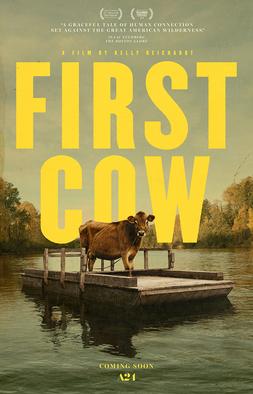
— First Cow is an anti-western, one that depicts life in the frontier but with no masculine energy whatsoever. There are no chases on horses, shoot-outs or high-noon stand-offs here, just two friends trying to get by in trying circumstances. While the approach is refreshing, the story also lacks a climax or any character development.
(2020) Director: Kelly Reichhardt. Screenplay: Jonathan Raymond, Kelly Reichardt. Cast: John Magaro, Orion Lee, Toby Jones, Ewen Bremner, Scott Shepherd, Gary Farmer, Lily Gladstone.
— You now work in Marcodata Refinement at Lumon Industries, if mindless jobs are your jam.
— A British phone company has created a generative “granny AI” that engages and ultimately frustrates scam callers. For once, a useful application of generative AI.
— And here is the trailer for “SLY LIVES! (aka The Burden of Black Genius),” Questlove’s documentary film about Sly Stone.
— This mashup of SNL musical guests, that acts as the intro to Questlove’s upcoming documentary, is brilliant. Can’t wait to watch the whole thing now.
— Stimulation Clicker is a fun new app by digital artist Neal Agarwal. This one grabs your attention and magically sucks you in. You keep playing the game, clicking the button, engaging with everything presented to you. The more attention you pay, the more useless features the app will add until it becomes a completely pointless mess of videos, sound, and things flying around. And before you know it, you’ve spent thirty minutes on the site and accomplished absolutely nothing. Just like most websites today.
Are We Demonising Data Collection, or Data Exploitation?
— Towards the end of The Gutenberg Parenthesis—in which Jeff Jarvis argues that the internet is too new a medium for us to understand its long-term social impact—he writes:
I worry that we demonize data and regulate its collection more that its exploitation, we might cut ourselves off from the knowledge that can result.
People don’t oppose data collection per se. They oppose data collection as a means to further the agenda of tech-oligarch owned businesses. As such we need to differentiate what data is being collected and more importantly why it is collected.
Is the data collected to build comprehensive psychograms of every user, what they read and for how long, what links they click, and what they share; with goal of extending their stay within walled-garden websites and to sell more advertising and thus to make more money for stake holders? Is the data collected to train AI models to eventually replace salaried humans in creative vocations with to make more money for stake holders? Or is this data collected to study human behaviour, to archive the current cultural, political or technological discourse, so humanity can learn from it now and in future generations.
When we’re discussing intrusive data collection and how to reign it in, we’re not talking about a bunch of scientists trying to understand current and historic events mediated through social media similar to how climatologists drill ice cores into the antarctic shelf to understand the composition the atmosphere throughout history. We’re talking about greedy and morally bankrupt business owners who collect data to manipulate, to deceive, and frankly steal, just to make a buck.
Herein lies the difference.
We don’t live in medieval Florence where the arrival of a new medium led to an explosion of new ideas that few people with power rightly perceive as a threat to their power, and where the better idea eventually prevails. No, we live in a world where greedy billionaires actively curate algorithms so they push engaging but false divisive content on millions of people to sell ads, and more recently to advance their midlife-crisis driven political agendas.
The data is currently collected by the wrong people, those that can afford extensive hardware to store everything that is being said and done online for eternity. But open APIs that allows access to the data are a thing of the past so the data ends up on closed silos, where it’s useful to few but useless to the majority of society now and in the future.
— A web page that uses every HTML element doubles as a comprehensive reference and learning guide.
— Questlove on his upcoming documentary on the history of music on Saturday Night Live:
The whole experience is the same as “Summer of Soul.” At first, I said, “Just let me get the 20 coolest performances, let’s cut and paste it, and that’s it.” But I’m not at the place where I’m ready to say: “OK, here’s what you asked for. Where’s my money?” I want to make history buffs and nerds feel good about this show, and I want future creatives to get a master class on how to take risks and be creative.
Funding member of groundbreaking hip-hop group The Roots, member of the Soulquarians, Fallon’s in-house band (neglectable), author of books on music history and creativity and music-history documentary film maker. Questlove is manifesting himself as one of the most important and influential cultural icons of our times.